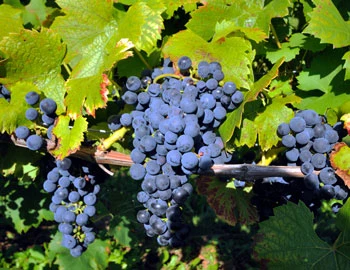
Nicolas Feuillatte Palmes d'Or brut 2009
AOC Champagne, 750 ml

| Grape variety: | Chardonnay, Pinot noir |
| Producer: | Nicolas Feuillatte |
| Origin: | France / Champagne |
| Other vintages: |
Description
The Palmes d'Or Brut is the showpiece from the house of Nicolas Feuillatte. The 2009 vintage benefited from perfect conditions for ripening the grapes, with the Grand Cru chalk soils playing a decisive role. The bouquet is characterised by ripe white fruit and a fine mineral note. On the palate, the champagne is intense and complex, with spicy nuances and a hint of hazelnut. The mousse is sensual and smooth. A refreshing, salty note rounds off the flavour experience and ensures a long-lasting, lively finish. With its complex structure and remarkable finesse, this champagne is the perfect accompaniment to fine fish dishes such as turbot or sea bass as well as tender white meat. Enjoy this majestic champagne from a large glass!
Celebrate the Art of Sabring!

With its elegant design, this champagne sabre is not only an impressive eye-catcher at any celebration and an indispensable tool for stylish sabering, but also the perfect gift for all passionate sparkling wine lovers.
Nicolas Feuillatte Palmes d'Or brut 2009:
4 for 3 with promocode PALMES
How to benefit:
- Add four bottles Nicolas Feuillatte Palmes d'Or brut 2009 à 75 cl to your shopping basket
- Enter coupon code PALMES in the order summary
- You will receive the fourth bottle for free and pay only for three bottles
Special offer valid until December 31, 2024 if available in stock.
Attributes
| Origin: | France / Champagne |
| Grape variety: | Chardonnay, Pinot noir |
| Ripening potential: | 6 to 20 years after harvest |
| Drinking temperature: | 10 to 12 °C |
| Food Pairing: | Apéro riche, Fruit tart, Whole baked fish, Roast veal with morel sauce, Coquilles Saint Jacques on lentils, Mussels au gratin |
| Vinification: | fermentation in steel tank, pressing the whole grape |
| Harvest: | hand-picking, strict selection |
| Maturation: | in steel tank, on the yeast |
| Volume: | 12.5 % |
| Note: | Contains sulphites |
Nicolas Feuillatte
Nicolas Feuillatte, a visionary and gifted entrepreneur, presented his Champagne for the first time in 1976. It quickly became the trendy brand in jet-setter circles in the USA, Australia and England, circles which Nicolas Feuillatte regularly frequented. In just 30 years, Nicolas Feuillatte rose to become the No. 1 Champagne brand in France.
Behind the brand lie numerous wine growers and their families, lovingly tending their vineyards with the experience of generations to obtain the best quality grapes for the harvest. They are organised within the Centre Vinicole de la Champagne, the most important wine growers’ association in Champagne. The vineyards include 13 invaluable Grand Cru and 33 1er Cru areas, the basis for exclusive and prestigious top cuvées such as Palmes d'Or Brut and Palmes d'Or Rosé. In order to ensure flawless quality, the grapes – regardless of origin – are pressed immediately after harvesting in on-site presses in the vineyards themselves.

Chardonnay
King or beggar?
Hardly any variety of vine shows such a broad spectrum of quality as the Chardonnay. Its wines range from faceless neutrality to breath-taking class. It is an extremely low-maintenance vine, which explains why it is grown around the world – even in places where it probably should not be. The aromas of the Chardonnay variety are not very pronounced: a bit of green apple, a little hazelnut; in warmer latitudes, also melon and exotic fruits. The wines are often defined by maturing in casks. They develop more or less subtle notes of butter, toasted bread and vanilla. The grapes achieve their highest expression in their region of origin, Burgundy. Its heart beats in the Côte de Beaune: one might think of the plant growth of Meursault or Puligny-Montrachet. With their finesse and complexity, they can survive for decades. Chardonnay also achieves first class in some Blanc-de-Blancs champagnes. It additionally yields great wines in the Burgundian Chablis, and increasingly in Australia and Chile. A simple rule of thumb for pairing with food: When butter and cream are involved, you cannot go wrong with Chardonnay.

Pinot noir
Blueprint of the terroir
No other variety expresses its terroir as precisely as Pinot noir. It is a sensitive, fragile grape. But when it succeeds, it gives the world some of its very greatest wine plants. It especially excels in Burgundy, where it has been cultivated for at least 700 years. Even in the middle ages, it was considered so precious that it was kept separate from other grapes so as to not diminish its value. The finest examples are delicate and fragrant with aromas of cherries and red berries. With maturity, notes of forest floor, leather and truffles enter as well. An irresistible fruity sweetness still shines through, even after several decades. The Pinot noir does well in cool locations: in Switzerland and in Germany, where it is known as Blauburgunder and Spätburgunder respectively; in Alsace and in South Tyrol, in Oregon, New Zealand and Tasmania. Not least, it yields fantastic champagnes. It is a wonderful culinary companion. With its soft tannins and charming bouquet, it meshes with everything, from Güggeli and cheeses to fried fish.

France
France – Philosophy in a bottle
According to French philosophy, wine should be an expression of the soil and climate. They use the word “terroir” to describe this. Terroir makes every wine different, and many especially good. French wine is regarded worldwide as an expression of cultural perfection. The French believe that humans are responsible for the quality of the berries, the vine variety for their character, and nature for the quantity. This philosophy can be expressed succinctly as: “the truth is the vineyard, not the man.”



